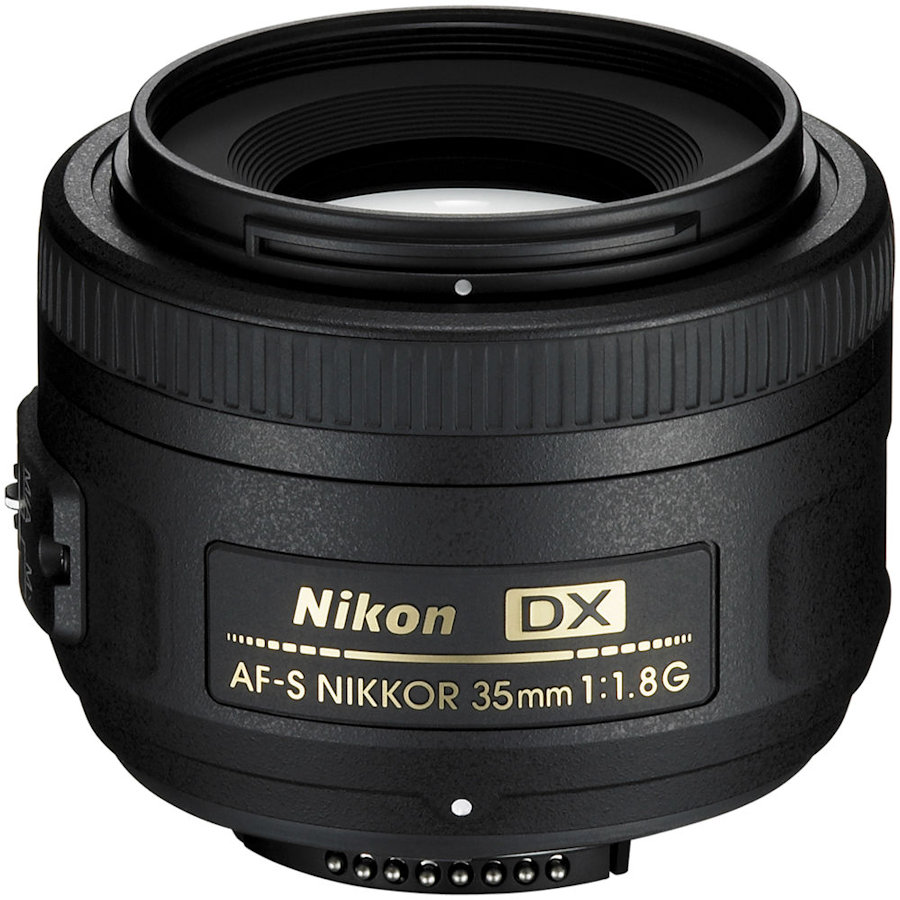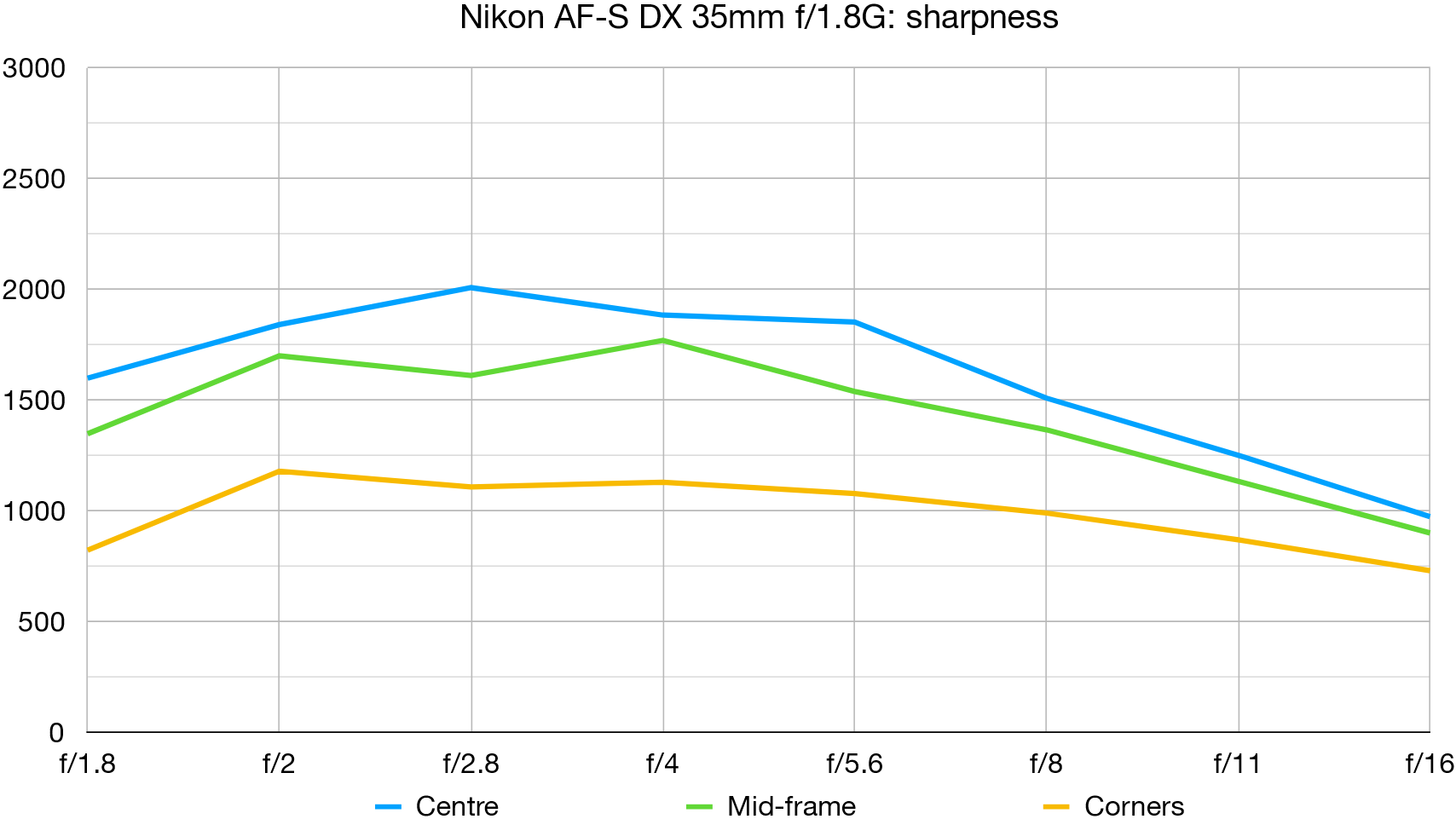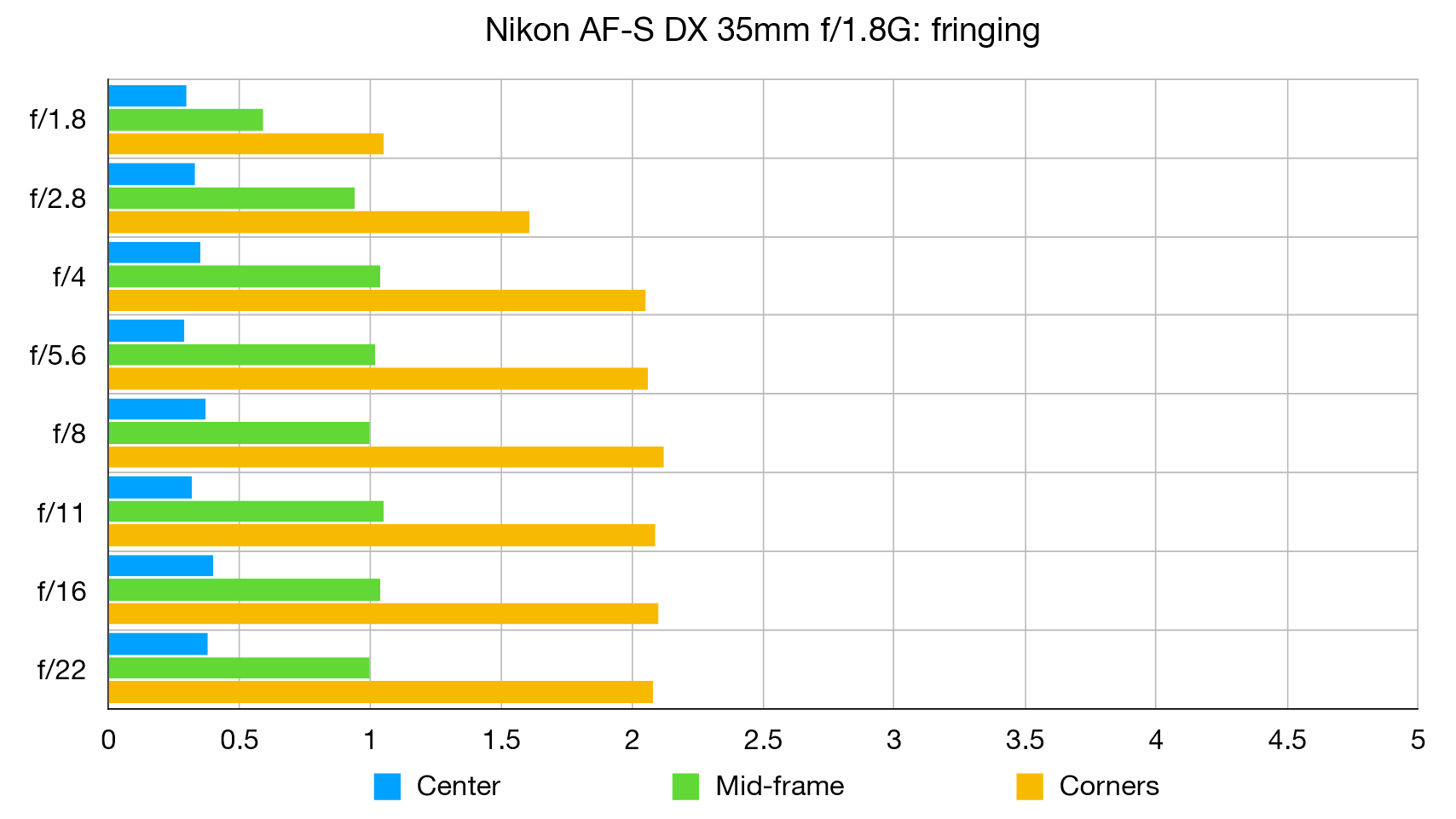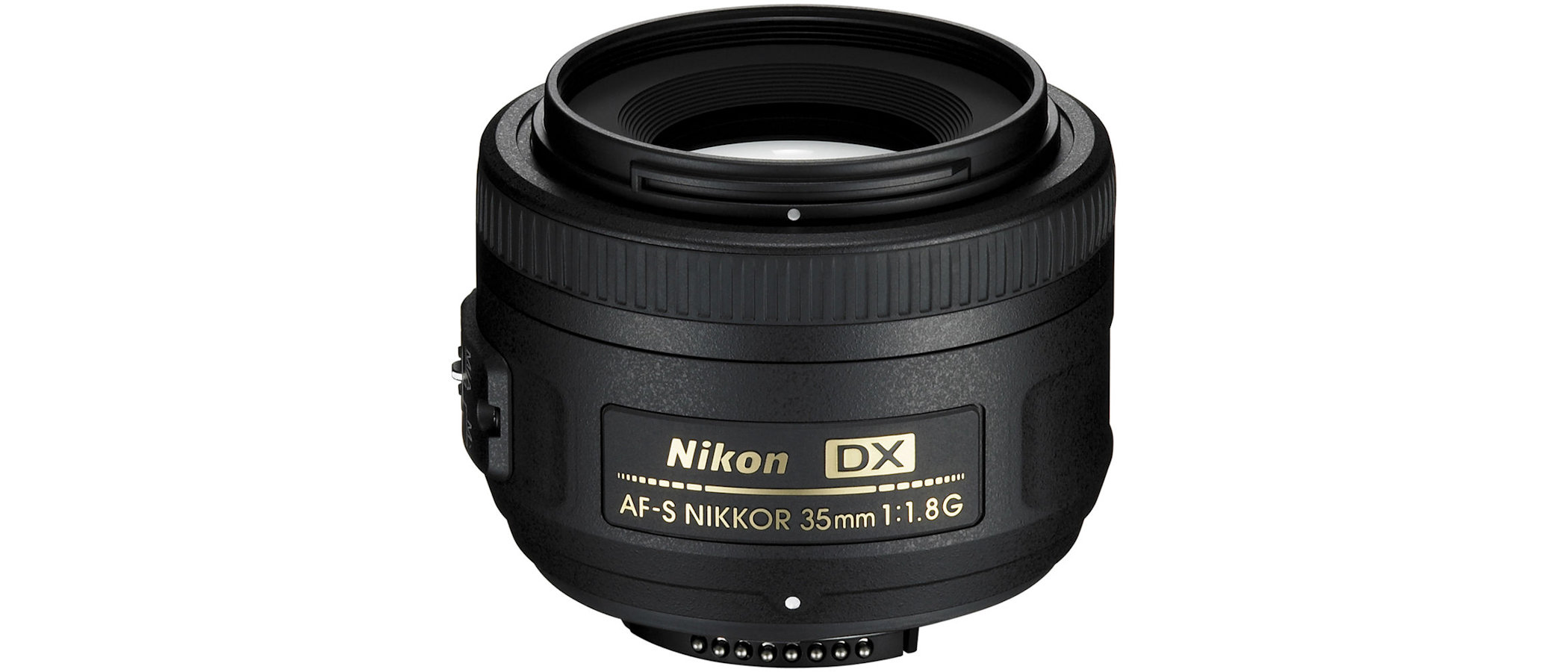Digital Camera World Verdict
Not to be confused with 35mm lenses for full-frame cameras, this one is designed specifically for use on APS-C format bodies, this having an ‘effective’ focal length of 52.5mm and pretty much the same field of view as a standard 50mm lens in full-frame terms. It’s nicely compact and lightweight with good handling characteristics. Sharpness is very good from f/2.8 to f/8 and the f/1.8 aperture enables a tight depth of field, although bokeh isn’t particularly smooth.
Pros
- +
Compact and lightweight
- +
Inexpensive to buy
- +
Good overall performance
Cons
- -
No focus distance scale
- -
Mediocre wide/narrow aperture sharpness
- -
Bokeh lacks smoothness
Why you can trust Digital Camera World
The Nikon AF-S DX 35mm f/1.8G works well as a ‘standard prime’ on APS-C format Nikon DSLRs, the 1.5x crop factor giving it an effective focal length of 52.5mm. Unlike some of Nikon’s more recent lenses, it has a ring-type ultrasonic autofocus system and mechanically linked aperture control, making it compatible with older Nikon DSLRs. It’s useful for portraiture, still life photography and in any situation where you want a natural field of view with a wider aperture than a zoom lens can deliver, for a tighter depth of field or to freeze motion under dull lighting conditions.
Specifications
Mount: Nikon F (DX)
Full-frame: Yes
Autofocus: Yes
Stabilization: No
Lens construction: 8 elements in 6 groups
Angle of view: 44 degrees
Diaphragm blades: 7
Minimum aperture: f/22
Minimum focusing distance: 0.3m
Maximum magnification ratio: 0.16x
Filter size: 52mm
Dimensions: 70x53mm
Weight: 200g
Key features
As a DX format lens, this Nikon only needs to produce a relatively small image circle, for covering a downsized APS-C format image sensor. That and its fairly modest f/1.8 aperture rating enable a small and lightweight build but, even so, it’s only marginally smaller and is actually a little heavier than the FX (full-frame) format Nikon AF-S 50mm f/1.8G.
The optical path is fairly straightforward, featuring just eight elements in total. One aspherical element is included in the line-up but there’s no ED (Extra-low dispersion) glass. Nikon’s Super Integrated Coating is on hand to minimize ghosting and flare.
Based on a ring-type ultrasonic system, autofocus comes with the usual full-time manual override via a mechanically linked focus ring. An auto/manual focus switch is also featured on the lens barrel but the lens lacks a focus distance scale.
The aperture is controlled from the host camera body by a mechanical lever, rather than the electromagnetic mechanism of relatively recent Nikon ‘E’ lenses. This avoids incompatibility issues with older Nikon DSLRs. The aperture diaphragm is based on seven curved blades and remains fairly well rounded when stopping down a little.

Performance
Autofocus speed is pretty quick and focusing is internal so the front element doesn’t rotate. This makes it easier to use filters like circular polarizers and ND grads. Sharpness is very good across the whole image frame at apertures between f/2.8 and f/8 but less impressive at wider and narrower apertures. Lateral chromatic aberration can be noticeable towards the corners of the frame but automatic correction is available in all current and recent Nikon cameras.
One of the biggest reasons for buying a relatively fast prime is that you can get a tighter depth of field than from a slower zoom lens. The quality of bokeh isn’t particularly smooth from this lens, compared with many other f/1.8 primes on the market.
Lab results
We run a range of lab tests under controlled conditions, using the Imatest Master testing suite. Photos of test charts are taken across the range of apertures and zooms (where available), then analyzed for sharpness, distortion and chromatic aberrations.
We use Imatest SFR (spatial frequency response) charts and analysis software to plot lens resolution at the center of the image frame, corners and mid-point distances, across the range of aperture settings and, with zoom lenses, at four different focal lengths. The tests also measure distortion and color fringing (chromatic aberration).
Sharpness:

Sharpness is impressive across the whole image frame from f/2.8 to f/8 but a bit lacking wide-open at f/1.8, especially towards the edges of the frame. Sharpness starts to drop off at f/11 through to f/22, due to diffraction.
Fringing:

Lateral chromatic aberration can be noticeable towards the corners of the frame, especially at f/4 and narrower apertures, but current and recent Nikon DSLRs have automatic in-camera correction.
Distortion: -1.65
There’s a little barrel distortion but it’s not bad enough to be noticeable in most shooting scenarios.
Verdict
Not to be confused with 35mm lenses for full-frame cameras, this one is designed specifically for use on APS-C format bodies, this having an ‘effective’ focal length of 52.5mm and pretty much the same field of view as a standard 50mm lens in full-frame terms. It’s nicely compact and lightweight with good handling characteristics. Sharpness is very good from f/2.8 to f/8 and the f/1.8 aperture enables a tight depth of field, although bokeh isn’t particularly smooth.
Read more:
• Best camera lenses to get
• Best Canon lenses
• Best Nikon lenses
• Best Sony lenses
Matthew Richards is a photographer and journalist who has spent years using and reviewing all manner of photo gear. He is Digital Camera World's principal lens reviewer – and has tested more primes and zooms than most people have had hot dinners!
His expertise with equipment doesn’t end there, though. He is also an encyclopedia when it comes to all manner of cameras, camera holsters and bags, flashguns, tripods and heads, printers, papers and inks, and just about anything imaging-related.
In an earlier life he was a broadcast engineer at the BBC, as well as a former editor of PC Guide.


